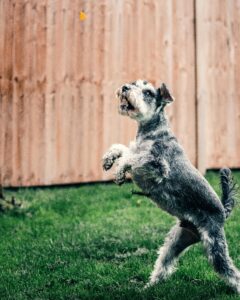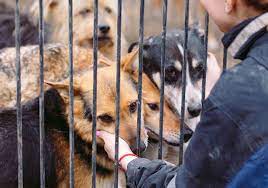Dogs are more than just pets; they are our loyal companions, bringing joy and love into our lives. As responsible dog owners, it is crucial to understand the importance of exercise for our furry friends.
Exercise is not just a means of burning off excess energy; it plays a vital role in a dog’s physical and mental well-being. In this article, we will explore why dogs need exercise and the numerous benefits it provides.
Table of Contents
ToggleThe Physical Benefits of Exercise:
Regular exercise is essential for maintaining a dog’s physical health. Here are some ways exercise benefits your four-legged companion:
- Weight Management: Just like humans, dogs can struggle with weight gain. Regular exercise helps burn calories and maintain a healthy weight, reducing the risk of obesity-related health issues.
- Muscle Tone and Strength: Exercise helps dogs develop strong muscles, enhancing their overall strength and endurance. Strong muscles support their joints and reduce the risk of injuries.
- Improved Cardiovascular Health: Engaging in activities that get the heart pumping, such as running or brisk walking, improves a dog’s cardiovascular fitness. A healthy heart ensures proper blood circulation and lowers the risk of heart disease.
- Stronger Bones: Certain forms of exercise, like walking or playing fetch, contribute to the development of strong bones and help prevent bone-related conditions like osteoporosis.
The Mental Benefits of Exercise:
Exercise is not only about physical fitness; it also has a profound impact on a dog’s mental well-being. Here’s why exercise is crucial for their mental health:
- Stress Relief: Dogs, just like humans, can experience stress and anxiety. Regular exercise provides an outlet for pent-up energy and helps dogs release stress, leading to a calmer and happier disposition.
- Mental Stimulation: Engaging in different activities and environments during exercise stimulates a dog’s mind, preventing boredom and destructive behavior. Mental stimulation is essential for their cognitive development and can even enhance their problem-solving abilities.
- Enhanced Socialization: Many dog owners incorporate exercise through walks in the park or visits to the dog park. These activities expose dogs to new sights, sounds, and other canines, promoting socialization and reducing the likelihood of behavioral issues related to fear or aggression.
- Improved Sleep: Dogs who exercise regularly tend to have better sleep patterns. Physical exertion helps them expend energy, leading to a more restful sleep and reduced chances of sleep disturbances.
How Much Exercise Do Dogs Need?
The exercise requirements for dogs vary depending on factors such as age, breed, size, and overall health. As a general guideline:
- Puppies: Puppies have boundless energy, but their exercise should be controlled to avoid stressing their developing bones and joints. Short play sessions and gentle walks are suitable for puppies.
- Adult Dogs: Most adult dogs require at least 30 minutes to 2 hours of exercise per day, depending on their breed and energy level. Activities like walking, running, swimming, or playing fetch are ideal.
- Senior Dogs: While senior dogs may not have the same stamina as younger ones, they still need regular exercise. However, the intensity and duration should be adjusted to accommodate their aging bodies. Gentle walks and low-impact activities are beneficial.
It is crucial to consult with your veterinarian to determine the appropriate exercise routine for your dog, taking into account their individual needs and health conditions.
Tips for Exercising Your Dog:
To ensure a safe and enjoyable exercise experience for your dog, consider the following tips:
- Start Slow: If your dog is not accustomed to regular exercise, start with short sessions and gradually increase the duration and intensity. This approach allows their bodies to adapt without straining their muscles or joints.
- Choose Suitable Activities: Different dog breeds have varying exercise needs. Research your dog’s breed to understand their specific requirements. For example, herding breeds may enjoy mentally challenging activities, while retrievers thrive on retrieving games.
- Mix It Up: Variety is the spice of life! Keep your dog engaged and stimulated by incorporating different activities into their exercise routine. This prevents boredom and maintains their interest.
- Consider Weather Conditions: Extreme temperatures can be harmful to dogs. During hot weather, exercise your dog during cooler parts of the day and ensure they have access to shade and water. In colder weather, provide your dog with appropriate protective gear.
- Play and Bond: Exercise time is an excellent opportunity to strengthen the bond between you and your furry friend. Join in the fun by actively participating in their activities, such as playing fetch or going for a hike together.
Conclusion:
Exercise is not merely a luxury for dogs; it is a necessity. Regular exercise provides a multitude of physical and mental benefits, contributing to their overall health and well-being. By ensuring our dogs get the exercise they need, we can promote a happier, healthier, and more balanced life for our beloved companions. So, lace up those walking shoes, grab the leash, and embark on an adventure-filled journey with your furry friend today!
Remember, before starting any exercise program, consult your veterinarian to determine the best approach for your dog’s individual needs and circumstances.


![The Ultimate Guide to Road Tripping with Your Dog [2025 Update]](https://bellabeanupdate.com/wp-content/uploads/2025/05/pexels-photo-1143369-300x209.jpeg)





























